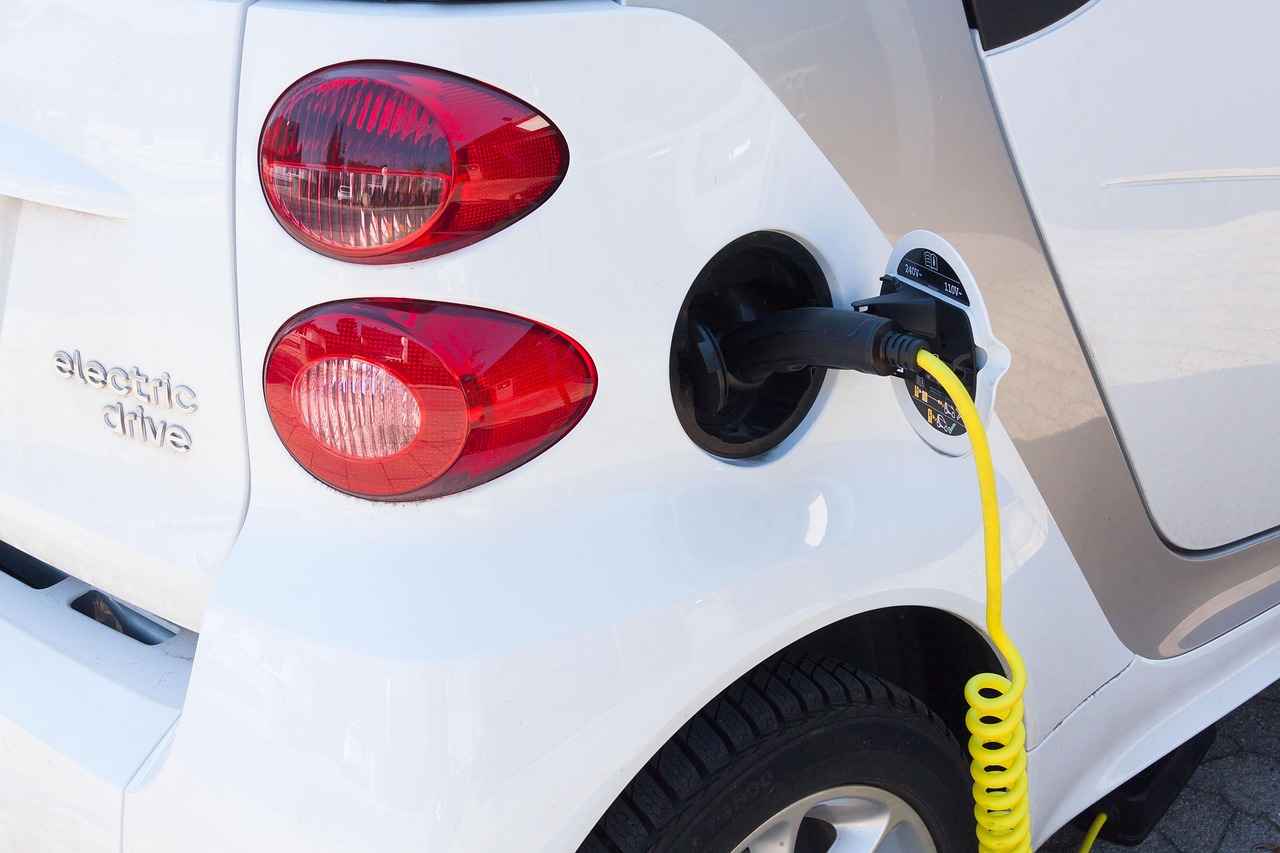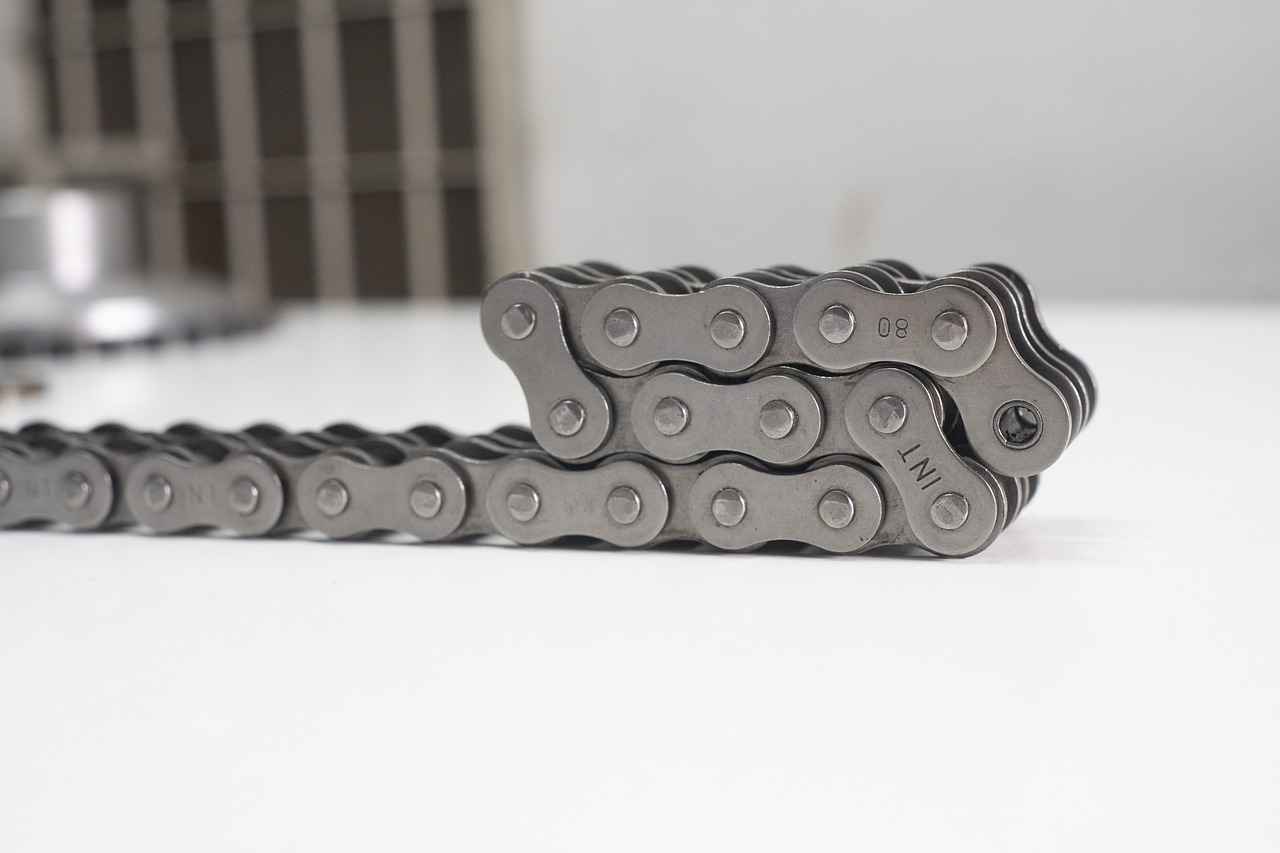This article delves into the costs associated with sump pump installation, providing homeowners with essential insights on pricing factors, types of sump pumps, and additional expenses to consider before making a purchase.
What Are the Average Costs for Sump Pump Installation?
Understanding the average costs for sump pump installation is crucial for effective budgeting. Typically, installation costs can range from $1,000 to $3,000. This price range is influenced by factors such as the geographical location, the type of sump pump selected, and the complexity of the installation process.
What Factors Influence Sump Pump Installation Costs?
Several key factors can significantly affect the overall cost of installing a sump pump:
- Type of Sump Pump: Different pumps come with varying price tags.
- Labor Costs: Installation labor costs can fluctuate based on local rates.
- Additional Work: Any necessary plumbing or electrical modifications can add to the total cost.
How Does the Type of Sump Pump Affect Pricing?
The choice of sump pump plays a pivotal role in determining the installation cost. Submersible pumps, while generally more expensive, are known for their superior performance in flooded conditions compared to pedestal pumps, which are more budget-friendly but less effective in extreme situations.
What Are the Differences Between Submersible and Pedestal Pumps?
Submersible pumps are designed to be installed underwater, making them quieter and more efficient. Conversely, pedestal pumps are situated above ground, which allows for easier access for maintenance. Understanding these distinctions is essential for homeowners to make informed decisions.
Are Battery Backup Sump Pumps Worth the Investment?
Battery backup sump pumps provide an extra layer of protection during power outages. Although they come with a higher upfront cost, they can save homeowners from costly water damage, making them a valuable investment in the long run.
How Do Labor Costs Impact Overall Installation Expenses?
Labor costs can vary widely based on geographic location and the complexity of the installation. Homeowners should anticipate that labor can account for approximately 30-50% of the total installation cost, making it a significant factor in budgeting.
What Additional Costs Should Homeowners Consider?
Beyond installation costs, homeowners should also account for potential additional expenses:
- Permits: Depending on local regulations, permits may be required.
- Waterproofing: Additional waterproofing measures can enhance the effectiveness of the sump pump.
- Maintenance: Regular maintenance checks are crucial for ensuring the sump pump’s longevity and efficiency.
Are Permits Required for Sump Pump Installation?
Homeowners may need to obtain permits for sump pump installation, depending on local regulations. It’s vital to consult with local authorities to ensure compliance and avoid potential fines.
How Important Is Maintenance for Sump Pumps?
Regular maintenance is essential for the longevity and efficiency of sump pumps. Homeowners should budget for annual maintenance checks to prevent costly repairs or replacements in the future.
What Are the Long-Term Benefits of Installing a Sump Pump?
Investing in a sump pump offers numerous long-term benefits, including:
- Preventing Basement Flooding: A sump pump effectively manages water levels, reducing the risk of flooding.
- Reducing Mold Growth: By keeping basements dry, sump pumps help mitigate mold issues.
- Increasing Property Value: A well-maintained sump pump can enhance the appeal of a property to potential buyers.
How Does a Sump Pump Increase Property Value?
A sump pump can significantly enhance a property’s appeal by demonstrating effective water management. Homeowners may find that this investment pays off when selling their home, as it assures buyers of a dry and safe living environment.
What Are the Risks of Not Installing a Sump Pump?
Neglecting to install a sump pump can lead to severe water damage, mold growth, and expensive repairs. Understanding these risks can motivate homeowners to consider sump pump installation as a necessary precaution for protecting their property.

What Are the Average Costs for Sump Pump Installation?
When considering the installation of a sump pump, understanding the average costs involved is essential for effective budgeting. Homeowners can expect to pay between $1,000 and $3,000 for the installation of a sump pump. However, this range can fluctuate based on several key factors.
The cost of installing a sump pump is influenced by various elements, including the type of sump pump selected, the complexity of the installation, and geographical location. For instance, a submersible pump, which is designed to operate underwater, typically incurs higher costs due to its advanced technology and performance capabilities. In contrast, a pedestal pump, which sits above ground, is usually less expensive to install.
Additionally, the labor costs can significantly impact the overall price. On average, labor can constitute about 30-50% of the total installation cost. Homeowners in urban areas may face higher labor rates compared to those in rural locations. It’s advisable to obtain multiple quotes from local contractors to ensure a fair price.
- Type of Sump Pump: Different types of pumps have varying costs. Submersible pumps are generally more expensive than pedestal pumps.
- Labor Costs: Labor rates can vary based on location and the complexity of the job.
- Additional Work: Any necessary plumbing or electrical work can add to the overall expense.
- Permits: Some regions require permits for installation, which can incur additional fees.
Moreover, homeowners should consider the long-term costs associated with maintenance and potential repairs. Regular maintenance is crucial to ensure the pump operates efficiently. Budgeting for annual check-ups can prevent unexpected expenses down the line.
Beyond the initial installation costs, homeowners need to be aware of potential additional expenses. These may include:
- Permits: Depending on local regulations, permits may be required.
- Waterproofing: Additional waterproofing measures may be necessary to enhance the effectiveness of the sump pump.
- Maintenance: Regular maintenance checks are crucial for the longevity of the pump.
Understanding these factors can help homeowners make informed decisions and budget appropriately for sump pump installation.
To save on installation costs, consider the following tips:
- Shop Around: Get multiple quotes from different contractors to find the best price.
- Choose the Right Pump: Evaluate your specific needs to select a pump that offers the best value without overspending.
- DIY Options: If you have plumbing experience, consider a DIY installation to save on labor costs.
In conclusion, understanding the average costs and factors influencing sump pump installation is vital for homeowners. By being informed and prepared, you can ensure a smooth installation process while effectively managing your budget.
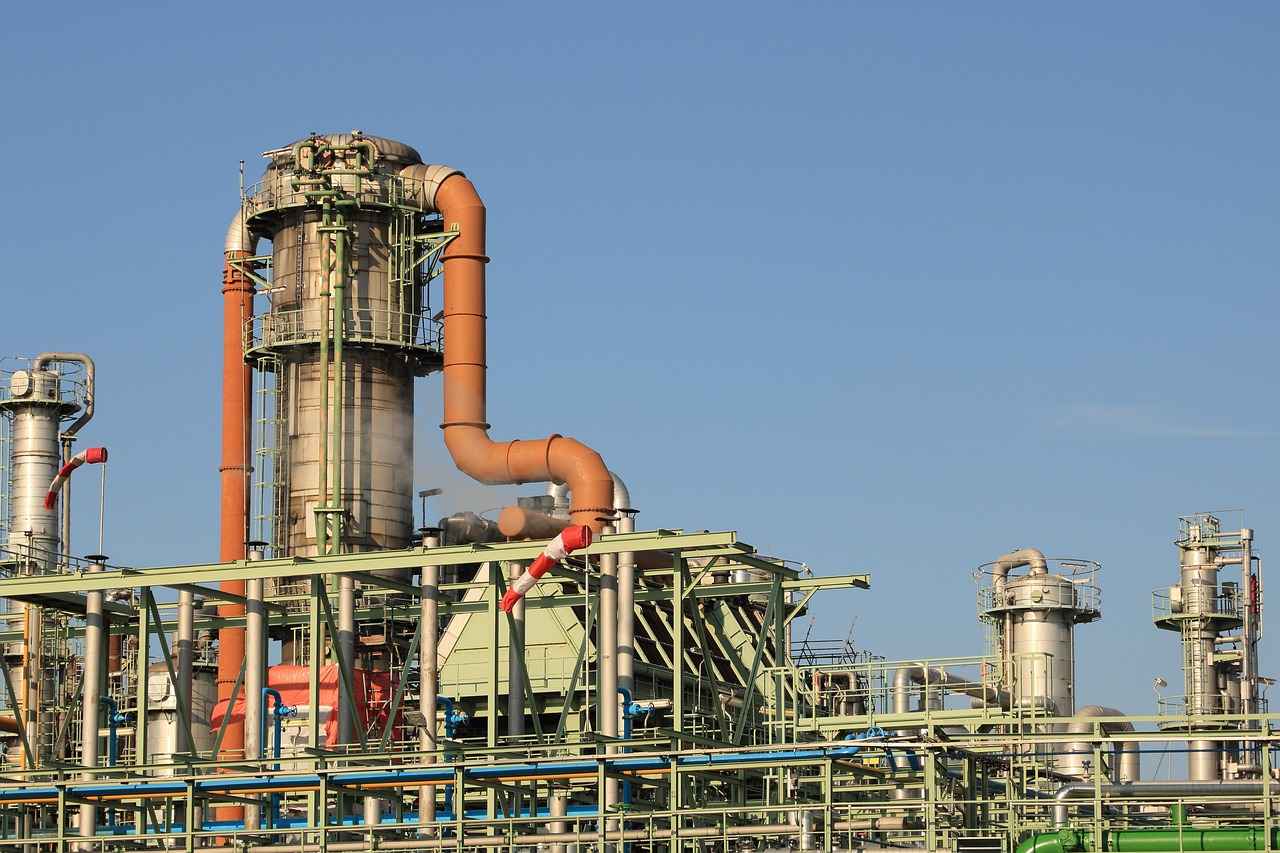
What Factors Influence Sump Pump Installation Costs?
When considering the installation of a sump pump, it is essential to understand the various factors that can significantly influence the overall costs. This knowledge not only aids in budgeting but also helps homeowners make informed decisions about their investments.
Several factors can affect the overall cost of sump pump installation. These include:
- Type of Sump Pump: The choice between a submersible pump and a pedestal pump can greatly impact pricing. Submersible pumps, while generally more expensive, are often more effective in areas prone to flooding.
- Labor Costs: Labor expenses can vary based on geographic location, with urban areas typically incurring higher rates. The complexity of the installation also plays a role; more complicated setups require more skilled labor, which can drive costs up.
- Plumbing and Electrical Work: If your installation requires additional plumbing or electrical work, this can add significantly to the total cost. Homeowners should factor in these potential expenses when budgeting.
- Permitting and Compliance: Depending on local regulations, obtaining the necessary permits for installation may incur additional costs. It’s crucial to check local building codes to avoid fines or complications during installation.
- Site Preparation: The condition of the area where the sump pump will be installed can also affect costs. If the site requires extensive preparation, such as excavation or waterproofing, this will add to the overall expense.
The type of sump pump you select has a direct correlation to the installation cost. For instance:
- Submersible Pumps: These pumps are designed to be installed underwater and are generally quieter and more efficient in managing water levels.
- Pedestal Pumps: Positioned above ground, these pumps are easier to access for maintenance but may not perform as well in high-water scenarios.
Battery backup sump pumps are an excellent option for homeowners concerned about power outages. Although they come with a higher initial cost, they can save homeowners from significant water damage during emergencies, making them a valuable investment.
Labor costs can account for a substantial portion of the total installation expenses, often ranging from 30% to 50% of the overall cost. It is advisable for homeowners to obtain multiple quotes from contractors to ensure competitive pricing.
Beyond the primary installation costs, homeowners should also consider:
- Maintenance: Regular maintenance is vital for the longevity of a sump pump. Annual service checks can prevent costly repairs down the line.
- Waterproofing Measures: Investing in waterproofing solutions can enhance the effectiveness of your sump pump and prevent future issues.
Regular maintenance is crucial for ensuring that your sump pump operates efficiently. Homeowners should budget for annual maintenance checks to avoid unexpected failures and costly repairs.
Investing in a sump pump provides numerous long-term benefits, including:
- Preventing Basement Flooding: A sump pump effectively manages groundwater and prevents flooding, protecting your home from water damage.
- Reducing Mold Growth: By keeping basements dry, sump pumps help mitigate the risk of mold and mildew, which can pose health risks.
- Increasing Property Value: A sump pump can enhance a property’s appeal by demonstrating effective water management, making it a worthwhile investment for homeowners.
Understanding these factors and costs associated with sump pump installation can empower homeowners to make informed decisions, ensuring they choose the right system for their needs.
How Does the Type of Sump Pump Affect Pricing?
When considering the installation of a sump pump, one of the most critical factors to evaluate is how the type of sump pump you choose can significantly affect the overall pricing. Understanding these distinctions can help homeowners make informed decisions that align with their needs and budget.
- Submersible Pumps: These pumps are designed to operate underwater, making them highly efficient for removing water in flooded areas. Their sealed design prevents damage from moisture, and they tend to be quieter during operation.
- Pedestal Pumps: Unlike submersible pumps, pedestal pumps sit above the sump pit. They are easier to access for maintenance but may be less effective in high-water scenarios. Their exposed design can make them noisier compared to their submersible counterparts.
Submersible pumps generally come with a higher initial price tag due to their advanced technology and construction. The installation of these pumps can range from $1,200 to $3,000, depending on factors such as the pump’s capacity, the complexity of the installation, and local labor costs. However, the benefits they provide, especially in areas prone to flooding, can justify the higher expense.
Pedestal pumps, on the other hand, are typically more affordable, with installation costs averaging between $800 and $1,500. Their simplicity and ease of access can make them a more budget-friendly option for homeowners who may not experience severe flooding. However, their performance may not be as reliable in extreme conditions, which is an essential consideration.
In addition to the type of pump, several other factors can influence installation costs:
- Labor Costs: Depending on your location, labor costs can vary significantly. In urban areas, skilled labor may demand higher rates, accounting for 30-50% of the total installation cost.
- Additional Features: Some homeowners opt for features like battery backups or smart technology integration, which can increase the overall price.
- Permits and Regulations: Depending on local building codes, you may need permits for installation, adding to the overall expense.
While the upfront costs of submersible pumps are higher, their performance in extreme conditions and longevity often make them a better investment in the long run. Homeowners should weigh the potential costs of water damage and mold growth against the initial installation expenses. A reliable sump pump can save thousands in repairs and maintenance over time.
Before choosing a sump pump, homeowners should consider:
- The specific flooding risks in their area.
- The overall budget for installation and maintenance.
- Long-term plans for the property, including resale value.
Ultimately, the type of sump pump selected can significantly affect the installation costs and the value it brings to the home. By understanding the differences between submersible and pedestal pumps, homeowners can make an informed choice that aligns with their needs and budget.
What Are the Differences Between Submersible and Pedestal Pumps?
Sump pumps play a crucial role in protecting homes from water damage, particularly in areas prone to flooding. When considering a sump pump installation, understanding the differences between submersible and pedestal pumps is essential for making an informed decision.
Submersible pumps are designed to operate while fully submerged in water. They are typically installed in a sump pit, allowing them to efficiently remove excess water from basements and crawl spaces. One of the significant advantages of submersible pumps is their quiet operation. Since they are located underwater, the noise generated during operation is considerably reduced compared to other types of pumps.
In contrast, pedestal pumps are mounted above the ground, with a long shaft extending into the sump pit. This design makes them easier to access for maintenance and repairs. Pedestal pumps tend to be less expensive than submersible models and are often preferred in situations where frequent maintenance is necessary. However, they can be noisier during operation due to their above-ground placement.
- Installation Location: Submersible pumps are installed underwater, while pedestal pumps are above ground.
- Noise Level: Submersible pumps operate quietly; pedestal pumps can be noisy.
- Accessibility: Pedestal pumps are easier to access for maintenance, while submersible pumps may require more effort to service.
- Cost: Submersible pumps are generally more expensive due to their advanced technology and performance capabilities.
Choosing between a submersible and a pedestal pump depends on several factors, including your budget, the specific needs of your home, and your willingness to perform maintenance. If you live in an area with frequent flooding and require a pump that can handle large volumes of water efficiently, a submersible pump may be the best option. However, if you prefer easy access for repairs and maintenance and are looking for a more budget-friendly solution, a pedestal pump could be the way to go.
Performance is another critical factor to consider. Submersible pumps are typically more powerful and can handle higher water levels, making them ideal for homes that experience significant flooding. Pedestal pumps, while effective, may struggle in extreme conditions. Understanding your home’s specific flooding risks can help you select the most suitable pump.
Maintenance requirements also vary between the two types. Submersible pumps need to be checked for debris and wear, but they are generally low-maintenance once installed. Pedestal pumps, on the other hand, require regular checks to ensure the motor and components are functioning correctly, as they are exposed to more environmental factors.
In summary, both submersible and pedestal pumps have their unique advantages and disadvantages. By carefully considering your home’s needs, budget, and maintenance preferences, you can make a well-informed decision that will protect your property from water damage for years to come.
Are Battery Backup Sump Pumps Worth the Investment?
When it comes to protecting your home from water damage, battery backup sump pumps serve as a critical line of defense, particularly during power outages. These systems are designed to operate independently of your home’s electrical supply, ensuring that your basement remains dry even when the lights go out. This feature is especially valuable in regions prone to heavy rainfall or flooding.
What Are the Benefits of Battery Backup Sump Pumps?
- Continuous Operation: Unlike standard sump pumps that rely on electricity, battery backup systems can function without power, providing peace of mind during storms.
- Prevention of Water Damage: The primary function of a sump pump is to remove excess water. A battery backup ensures that your home is protected at all times, reducing the risk of costly repairs due to water damage.
- Mold and Mildew Control: Keeping your basement dry with a reliable sump pump helps prevent the growth of mold and mildew, which can pose health risks and lead to additional repair costs.
- Increased Property Value: Homes equipped with sump pumps, especially those with backup systems, are often more attractive to potential buyers, enhancing marketability.
What Are the Costs Associated with Battery Backup Sump Pumps?
While the initial investment for a battery backup sump pump can be higher than that of a standard pump, many homeowners find this cost justified when considering the long-term benefits. The price for these systems typically ranges from $1,200 to $4,000, depending on the model and installation requirements. Factors influencing the cost include:
- Type of Pump: Higher-end models with advanced features may come at a premium.
- Installation Complexity: If your home requires extensive plumbing or electrical work, labor costs will increase.
- Brand and Warranty: Well-known brands with robust warranties may charge more but often provide better reliability.
How Do Battery Backup Systems Work?
A battery backup sump pump system typically includes a primary pump and a secondary pump powered by a battery. In the event of a power failure, the secondary pump activates automatically, ensuring that water continues to be expelled from your basement. Some models even come with alarms to alert homeowners when the battery is running low, adding an extra layer of security.
Are There Maintenance Considerations?
While battery backup sump pumps are designed for durability, regular maintenance is essential to ensure optimal performance. Homeowners should:
- Test the battery monthly to confirm it holds a charge.
- Inspect the pump for any signs of wear or damage.
- Clean the sump pit to prevent debris buildup that could hinder performance.
What Should Homeowners Consider Before Installation?
Before investing in a battery backup sump pump, homeowners should evaluate their specific needs. Consider factors such as the historical flooding patterns in your area, the size of your basement, and your budget. Consulting with a professional can provide tailored advice and help you choose the right system for your home.
In summary, while the upfront costs of battery backup sump pumps may be higher than standard options, their ability to safeguard your home against water damage during power outages makes them a worthwhile investment. With benefits ranging from continuous operation to increased property value, these systems are an essential consideration for homeowners looking to enhance their home’s protection.
How Do Labor Costs Impact Overall Installation Expenses?
When considering the installation of a sump pump, one of the most significant factors that homeowners must account for is labor costs. These costs can fluctuate dramatically, influenced by a variety of factors including geographic location, the complexity of the job, and the experience of the contractors involved.
- Geographic Location: Labor rates are not uniform across the country. In metropolitan areas, where the cost of living is higher, homeowners may find that labor costs can reach upwards of 50% of the total installation expense. Conversely, in rural regions, these costs may be considerably lower, sometimes accounting for as little as 30% of the total.
- Complexity of Installation: The intricacies involved in the installation process can also affect labor costs. For instance, if the installation requires extensive plumbing or electrical work, or if the sump pump needs to be placed in a hard-to-reach area, homeowners should expect to pay more for skilled labor.
- Contractor Experience: Hiring a seasoned professional may come with a higher price tag, but it often ensures a job well done. Experienced contractors are likely to complete the installation more efficiently and with fewer errors, potentially saving homeowners money in the long run.
In addition to these factors, it’s important for homeowners to consider additional expenses that may arise during the installation process. For example, if permits are required, this can add to the overall cost. Homeowners should check with local authorities to understand the necessary regulations and any associated fees.
Moreover, some homeowners may choose to take on the installation as a DIY project to save on labor costs. While this can be an appealing option, it’s crucial to recognize the potential risks involved. Improper installation can lead to system failures, resulting in costly repairs and even property damage.
To provide a clearer picture of how labor costs can impact the overall installation expenses, consider the following table:
| Factor | Impact on Labor Costs |
|---|---|
| Location | Higher in urban areas; lower in rural areas |
| Complexity | More complex installations increase labor costs |
| Contractor Experience | Experienced contractors may charge more but offer better quality |
Ultimately, homeowners should carefully evaluate their budget and consider obtaining multiple quotes from contractors to ensure they are receiving a fair price for labor. By understanding the various elements that contribute to labor costs, homeowners can make more informed decisions regarding their sump pump installation, ensuring that they are not only prepared for the upfront expenses but also for the long-term benefits of a properly installed system.
In summary, labor costs play a crucial role in the overall expense of sump pump installation. By recognizing the factors that influence these costs and planning accordingly, homeowners can effectively manage their budgets and ensure a successful installation process.
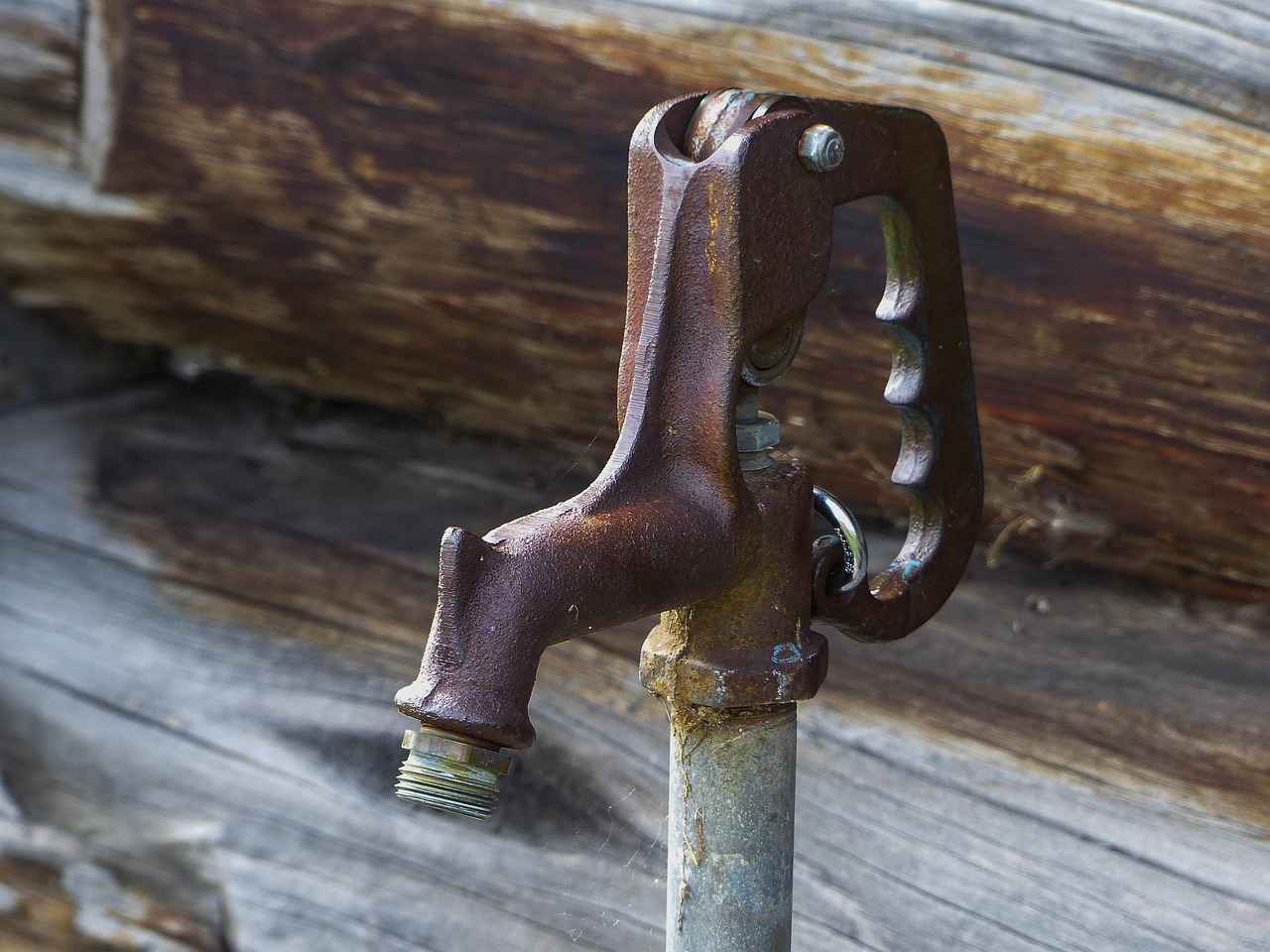
What Additional Costs Should Homeowners Consider?
When planning for the installation of a sump pump, it is essential for homeowners to look beyond just the initial installation costs. A comprehensive understanding of potential additional expenses can significantly impact the overall budget. This section delves into the various costs that homeowners should be aware of when considering a sump pump installation.
In addition to installation fees, there are several potential expenses that homeowners must consider:
- Permits: Depending on your local regulations, you may need to obtain permits before installing a sump pump. These permits ensure that the installation meets safety and building codes. Failing to secure the necessary permits can lead to fines and complications during the installation process.
- Waterproofing: If your basement is prone to flooding or moisture issues, investing in waterproofing solutions may be necessary. This could involve sealing walls, installing drainage systems, or applying waterproof coatings. While these costs can add up, they are crucial for enhancing the effectiveness of your sump pump.
- Maintenance: Regular maintenance is vital for the longevity and efficiency of your sump pump. Homeowners should budget for annual maintenance checks, which typically cost between $100 and $200. This proactive approach can help prevent costly repairs or replacements in the future.
- Electrical Work: If your sump pump requires electrical modifications, such as new wiring or a dedicated circuit, this can add to the overall installation cost. Hiring a licensed electrician ensures that all work complies with safety standards.
- Backup Systems: While not mandatory, investing in a battery backup system for your sump pump can provide additional peace of mind during power outages. These systems can range from $200 to $500, depending on the model and installation requirements.
By taking these additional costs into account, homeowners can create a more accurate budget for their sump pump installation. It is advisable to consult with professionals to get estimates and ensure that all potential expenses are covered.
As previously mentioned, obtaining the necessary permits is crucial. Local building codes may dictate whether a permit is required for sump pump installation. Homeowners should check with their local building department to avoid potential fines and ensure compliance with regulations. This step not only protects the homeowner but also ensures that the installation is safe and effective.
Regular maintenance is essential for ensuring that your sump pump operates effectively. Neglecting maintenance can lead to unexpected failures during critical times, such as heavy rainstorms. Homeowners should schedule annual inspections to check for clogs, test the pump’s functionality, and replace any worn-out parts. This preventative approach can save homeowners significant repair costs in the long run.
While the initial costs may seem daunting, the long-term benefits of installing a sump pump are substantial. Not only does it protect your home from water damage, but it also reduces the risk of mold growth and enhances property value. Homeowners who invest in a sump pump often find that it pays off when it comes time to sell their home, as it demonstrates effective water management and can be a strong selling point.
Are Permits Required for Sump Pump Installation?
When considering the installation of a sump pump, one critical aspect that homeowners must address is whether permits are required. Understanding local regulations surrounding sump pump installation is essential to ensure compliance and avoid any potential fines.
Permits are often required for sump pump installations to ensure that the work complies with local building codes and safety regulations. These regulations are in place to protect property owners and the community from potential hazards associated with improper installations. Failure to obtain the necessary permits can lead to legal issues and costly fines.
Before starting your sump pump installation, it is crucial to check with local authorities or your municipality’s building department. They can provide information on:
- Specific permit requirements in your area
- The application process for obtaining a permit
- Any associated fees
Many municipalities have online resources where homeowners can access this information, making it easier to stay informed.
Skipping the permit process can have serious ramifications. Not only can you face fines, but you may also encounter challenges when selling your home. Potential buyers may be wary of properties with unpermitted work, which could affect the overall value and marketability of your home.
In some areas, there may be exceptions to the permit requirement based on the scope of the installation or the type of sump pump being used. For instance, minor repairs or installations in certain residential zones may not require a permit. However, it is always best to verify this with local authorities to avoid any misunderstandings.
To ensure compliance with local regulations, consider the following steps:
- Consult with a licensed contractor who is familiar with local codes.
- Gather all necessary documentation before applying for a permit.
- Schedule inspections if required by your local building department.
By taking these proactive measures, homeowners can avoid complications and ensure that their sump pump installation is both safe and compliant.
In summary, understanding the importance of permits for sump pump installation cannot be overstated. Not only is it a matter of legal compliance, but it also safeguards your investment and property value. Always consult local regulations and seek professional advice to navigate the permit process smoothly.
How Important Is Maintenance for Sump Pumps?
Regular maintenance is crucial for ensuring the longevity and efficiency of sump pumps. Homeowners often overlook this aspect, but neglecting maintenance can lead to costly repairs or even complete replacements. When considering the investment in a sump pump, it is essential to factor in the costs of regular upkeep to maximize its lifespan and performance.
Annual maintenance checks are highly recommended. During these inspections, professionals can identify potential issues before they escalate. A well-maintained sump pump can last anywhere from 10 to 30 years, depending on the model and usage. However, without proper care, this lifespan can be significantly reduced.
- Checking for Blockages: One of the most common issues is debris accumulation in the sump pit. Regular cleaning ensures that the pump operates effectively.
- Inspecting the Float Switch: The float switch is vital for the pump’s operation. Ensuring it moves freely and isn’t stuck is a critical part of maintenance.
- Testing the Pump: Running the pump periodically can help homeowners ensure it is functioning properly, especially before the rainy season.
- Examining the Discharge Pipe: Ensuring that the discharge pipe is clear and free of obstructions is essential to prevent backflow.
Homeowners should also consider the environment in which the sump pump operates. Areas prone to heavy rainfall or flooding may require more frequent checks. Additionally, if the sump pump is located in a space that is prone to dirt or debris, more regular cleaning may be necessary.
While some homeowners may attempt to perform maintenance themselves, it is advisable to hire a professional. Experts can not only provide thorough inspections but also offer insights into any potential upgrades or improvements that could enhance the pump’s efficiency. This can be particularly beneficial for older models that may not operate as effectively as newer designs.
In terms of budgeting, homeowners should set aside funds for these annual maintenance checks. The cost of professional maintenance can range from $75 to $200 per visit, depending on the complexity of the service required. However, this expense is minimal compared to the potential costs associated with water damage or a broken pump.
Moreover, regular maintenance can also help in identifying energy inefficiencies. A sump pump that is not functioning optimally may consume more energy, leading to higher utility bills. By ensuring that the pump is well-maintained, homeowners can save on energy costs in the long run.
In conclusion, the importance of maintenance for sump pumps cannot be overstated. By investing time and resources into regular checks, homeowners can protect their property from the risks of flooding and water damage. A proactive approach to sump pump maintenance not only extends the life of the pump but also enhances the overall safety and value of the home.
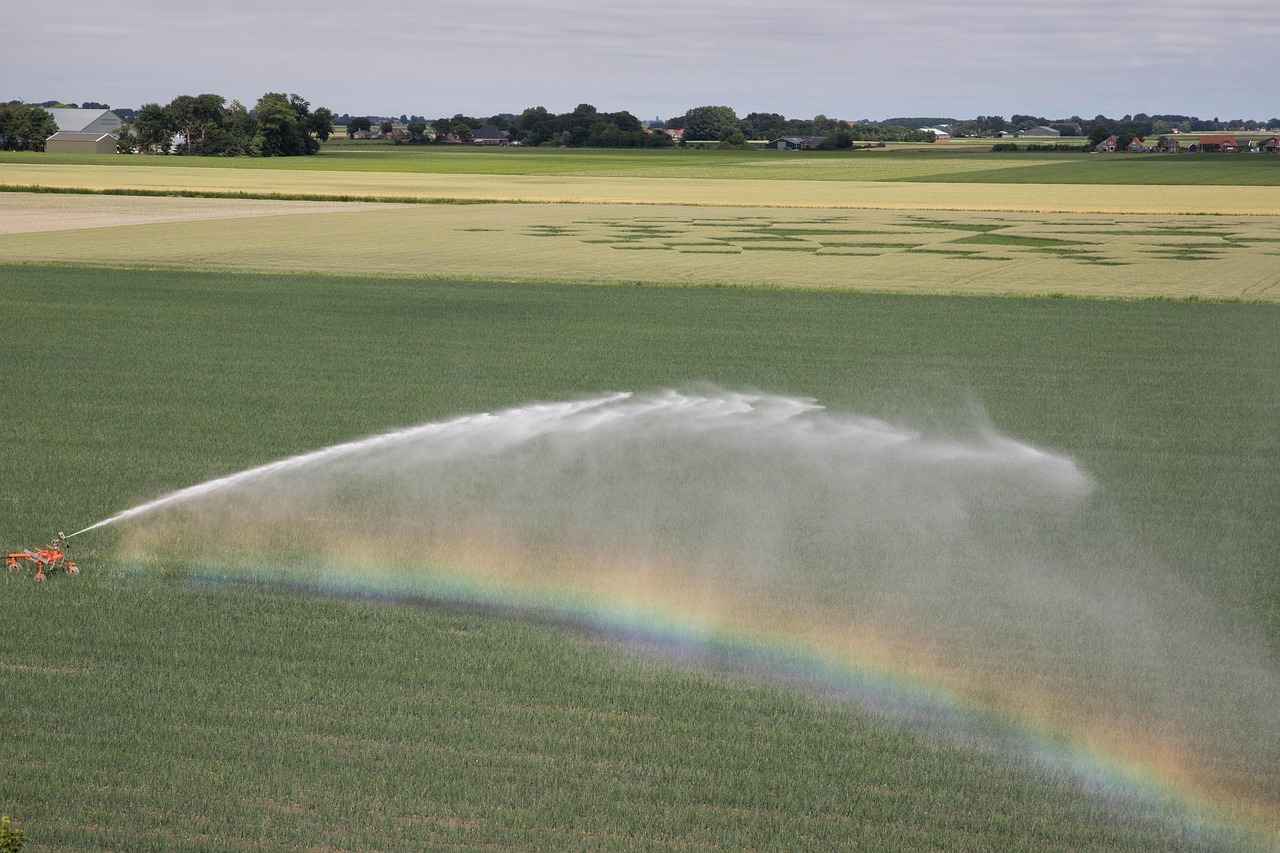
What Are the Long-Term Benefits of Installing a Sump Pump?
When considering home improvements, investing in a sump pump can yield significant long-term benefits. Homeowners often overlook these advantages, but understanding them can justify the initial installation costs. This article delves into the various benefits of installing a sump pump, helping you appreciate the value it brings to your property.
One of the primary functions of a sump pump is to prevent basement flooding. By automatically removing excess water that accumulates in the sump basin, these pumps protect your home from water damage. Flooded basements can lead to extensive repairs and loss of personal belongings, making a sump pump a wise investment for homeowners in flood-prone areas.
Excess moisture in your home creates an ideal environment for mold growth. A sump pump helps maintain a dry basement, significantly reducing the risk of mold and mildew. This is particularly important for families with allergies or respiratory issues, as mold can exacerbate these conditions. By investing in a sump pump, you not only protect your property but also promote a healthier living environment.
Homebuyers are increasingly aware of the importance of water management systems. Installing a sump pump can enhance your property’s appeal, demonstrating that you have taken proactive measures to protect your home from water damage. This can be a decisive factor for potential buyers, potentially leading to a higher resale value.
While the initial installation cost can range from $1,000 to $3,000, the long-term savings often outweigh this expense. By preventing water damage and mold growth, homeowners can avoid costly repairs and maintenance. Moreover, a sump pump can reduce homeowners’ insurance premiums, as many insurers offer discounts for properties equipped with effective water management systems.
- Peace of Mind: Knowing that your home is protected from flooding can provide significant peace of mind for homeowners.
- Energy Efficiency: Modern sump pumps are designed to be energy efficient, which can help reduce utility bills.
- Increased Usable Space: A dry basement can be transformed into a usable living space, adding value and functionality to your home.
Choosing not to install a sump pump can lead to severe consequences. Homeowners risk facing significant water damage, which can compromise the structural integrity of their home. Additionally, the potential for mold growth can result in health risks and costly remediation efforts. Understanding these risks can motivate homeowners to consider sump pump installation as a necessary precaution.
In summary, the long-term benefits of installing a sump pump are multifaceted. From preventing flooding and reducing mold growth to increasing property value and providing peace of mind, the advantages far exceed the initial costs. Homeowners should weigh these benefits carefully, as investing in a sump pump can be one of the best decisions for protecting their home and ensuring a safe living environment.
How Does a Sump Pump Increase Property Value?
When considering home improvements, one investment that often pays off is the installation of a sump pump. A sump pump can significantly enhance a property’s appeal to potential buyers by showcasing effective water management solutions. This feature is particularly attractive in regions prone to heavy rainfall or flooding, where water damage can be a major concern for homeowners.
Homeowners understand that maintaining a dry basement is crucial. A sump pump actively removes excess water that can accumulate in basements, preventing serious issues such as flooding, mold growth, and structural damage. By installing a sump pump, homeowners not only protect their property but also enhance its marketability.
A sump pump’s primary function is to manage groundwater effectively. When heavy rains occur, the pump activates to remove water from the basement, ensuring that it remains dry. This proactive approach to water management is appealing to buyers, as it reduces the likelihood of future water-related problems.
Investing in a sump pump can lead to significant long-term financial benefits. Homeowners may find that having a sump pump installed can lead to:
- Increased Property Value: Homes equipped with sump pumps often attract higher offers due to the reduced risk of water damage.
- Lower Insurance Premiums: Some insurance companies may offer discounts on premiums for homes with sump pumps, recognizing the reduced risk of claims.
- Reduced Maintenance Costs: By preventing water damage, homeowners can avoid expensive repairs and maintenance associated with mold and structural issues.
When potential buyers see a home equipped with a sump pump, they often perceive it as a well-maintained property. This perception can lead to quicker sales and potentially higher offers, as buyers appreciate the peace of mind that comes with knowing the home has a reliable water management system in place.
In addition to the basic functionality of a sump pump, features such as a battery backup system can further enhance a home’s appeal. A battery backup ensures that the sump pump continues to operate during power outages, which can be critical during severe storms. This added layer of protection can be a significant selling point.
Before installing a sump pump, homeowners should consider:
- Type of Sump Pump: Choosing between a submersible or pedestal pump can impact both performance and cost.
- Installation Costs: Understanding the total installation costs, including labor and materials, is essential for budgeting.
- Local Regulations: Checking for any necessary permits or regulations in your area can prevent future complications.
In summary, a sump pump not only protects a home from water damage but also enhances its appeal to buyers. By demonstrating effective water management, homeowners can increase their property’s value and ensure a smoother selling process. Investing in a sump pump is an intelligent decision that pays dividends in both protection and marketability.
What Are the Risks of Not Installing a Sump Pump?
When it comes to protecting your home from water damage, installing a sump pump is often a crucial step that many homeowners overlook. The risks associated with not having a sump pump in place can lead to devastating consequences that extend beyond mere inconvenience.
Failing to install a sump pump can result in significant water damage to your property. During heavy rainfall or snowmelt, basements and crawl spaces are particularly vulnerable to flooding. Without a sump pump, water can accumulate quickly, leading to:
- Structural Damage: Prolonged exposure to moisture can weaken foundations and walls, leading to costly repairs.
- Mold Growth: Stagnant water creates an ideal environment for mold and mildew, which can pose health risks to occupants.
- Decreased Property Value: Homes prone to flooding are less attractive to buyers, potentially impacting resale value.
Water damage is not just a cosmetic issue; it can compromise the very integrity of your home. Here are some consequences of ignoring the need for a sump pump:
1. **Health Hazards:** Mold spores can trigger allergies and respiratory issues.2. **Electrical Hazards:** Water can come into contact with electrical systems, creating a fire risk.3. **Pest Infestations:** Standing water can attract pests like mosquitoes and rodents, leading to further complications.
The financial burden of water damage can be overwhelming. Homeowners may face:
- High Repair Costs: Repairing water damage can range from a few hundred to tens of thousands of dollars, depending on the extent of the damage.
- Increased Insurance Premiums: Filing claims for water damage can lead to higher rates in the future.
- Loss of Personal Property: Furniture, electronics, and other belongings can be irreparably damaged by water.
To avoid the risks associated with water damage, homeowners should consider the following:
- Regular Inspections: Conduct periodic checks of your basement and crawl space for signs of moisture or leaks.
- Proper Drainage: Ensure that gutters and downspouts direct water away from your home’s foundation.
- Invest in a Sump Pump: A sump pump is an effective solution that can provide peace of mind during heavy rains.
In summary, the risks of not installing a sump pump are significant and can lead to severe water damage, mold growth, and financial strain. By understanding these risks, homeowners can make informed decisions to protect their properties and invest in preventative measures like sump pump installation.
Frequently Asked Questions
- What is the average cost of installing a sump pump?
The average cost for sump pump installation typically ranges from $1,000 to $3,000. This price can vary based on factors like the type of pump and your location.
- What factors can influence the installation costs?
Several factors can impact the overall installation costs, including the type of sump pump chosen, labor expenses, and any additional plumbing or electrical work needed.
- Are battery backup sump pumps worth it?
Yes, battery backup sump pumps are often considered a worthwhile investment. They provide extra security during power outages, potentially saving homeowners from costly water damage.
- Do I need a permit for sump pump installation?
It depends on local regulations. Some areas require permits for sump pump installation, so it’s essential to check with local authorities to avoid any fines.
- How important is maintenance for a sump pump?
Regular maintenance is crucial for the longevity and efficiency of your sump pump. Budgeting for annual maintenance checks can help prevent expensive repairs down the line.
- What are the risks of not having a sump pump?
Not installing a sump pump can lead to significant water damage, mold growth, and costly repairs. Understanding these risks can encourage homeowners to consider installation as a necessary precaution.

